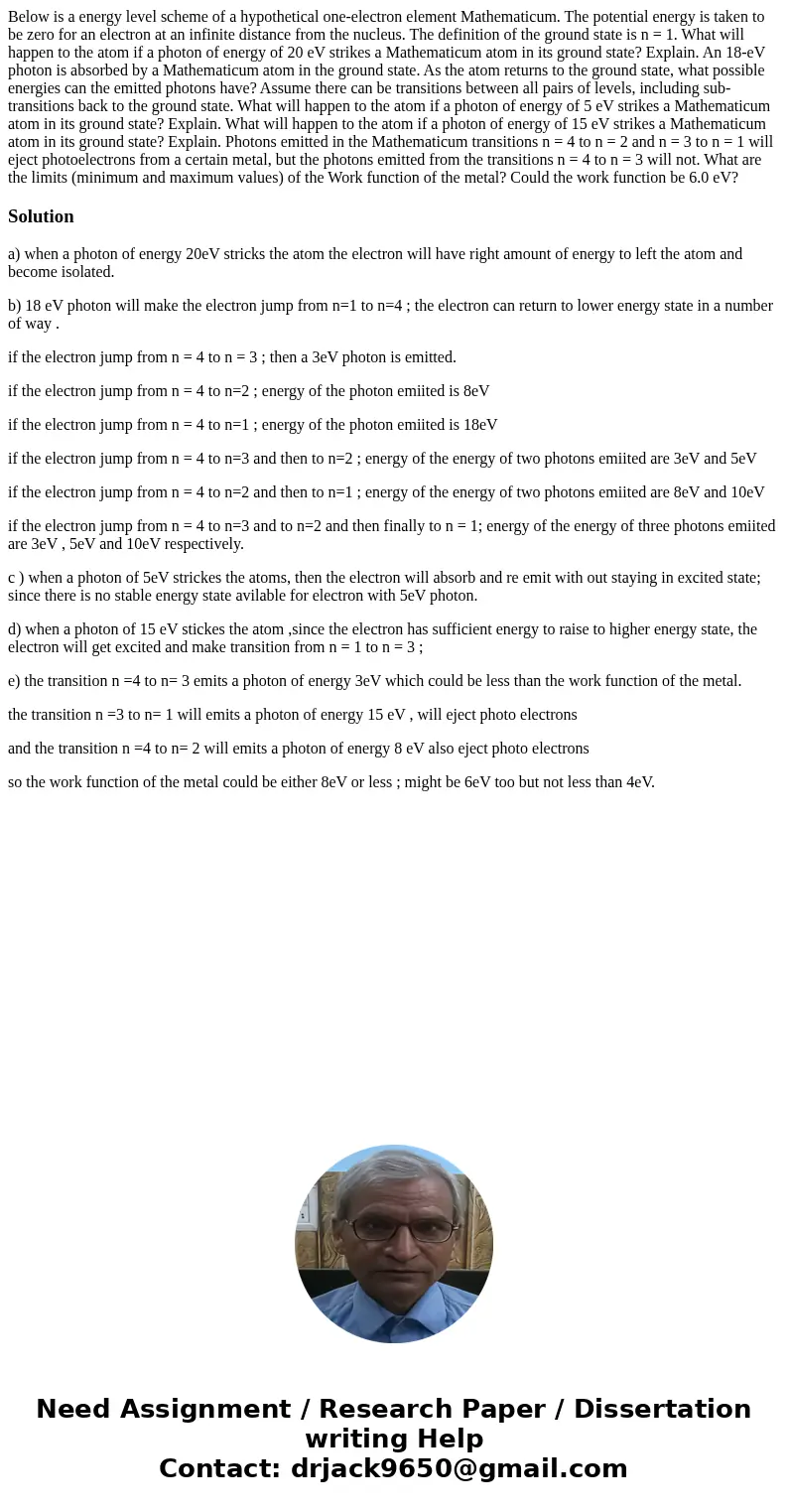Below is a energy level scheme of a hypothetical oneelectron
Solution
a) when a photon of energy 20eV stricks the atom the electron will have right amount of energy to left the atom and become isolated.
b) 18 eV photon will make the electron jump from n=1 to n=4 ; the electron can return to lower energy state in a number of way .
if the electron jump from n = 4 to n = 3 ; then a 3eV photon is emitted.
if the electron jump from n = 4 to n=2 ; energy of the photon emiited is 8eV
if the electron jump from n = 4 to n=1 ; energy of the photon emiited is 18eV
if the electron jump from n = 4 to n=3 and then to n=2 ; energy of the energy of two photons emiited are 3eV and 5eV
if the electron jump from n = 4 to n=2 and then to n=1 ; energy of the energy of two photons emiited are 8eV and 10eV
if the electron jump from n = 4 to n=3 and to n=2 and then finally to n = 1; energy of the energy of three photons emiited are 3eV , 5eV and 10eV respectively.
c ) when a photon of 5eV strickes the atoms, then the electron will absorb and re emit with out staying in excited state; since there is no stable energy state avilable for electron with 5eV photon.
d) when a photon of 15 eV stickes the atom ,since the electron has sufficient energy to raise to higher energy state, the electron will get excited and make transition from n = 1 to n = 3 ;
e) the transition n =4 to n= 3 emits a photon of energy 3eV which could be less than the work function of the metal.
the transition n =3 to n= 1 will emits a photon of energy 15 eV , will eject photo electrons
and the transition n =4 to n= 2 will emits a photon of energy 8 eV also eject photo electrons
so the work function of the metal could be either 8eV or less ; might be 6eV too but not less than 4eV.

 Homework Sourse
Homework Sourse